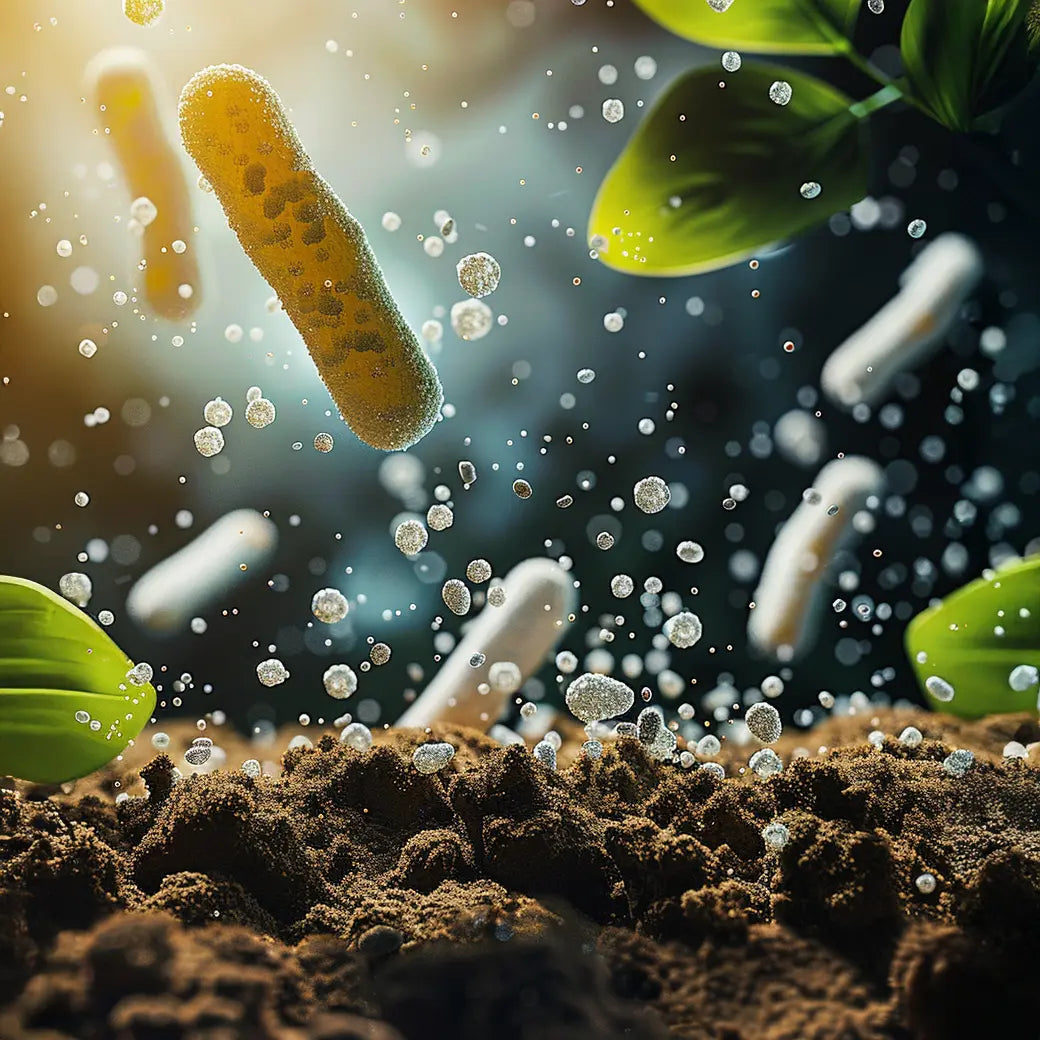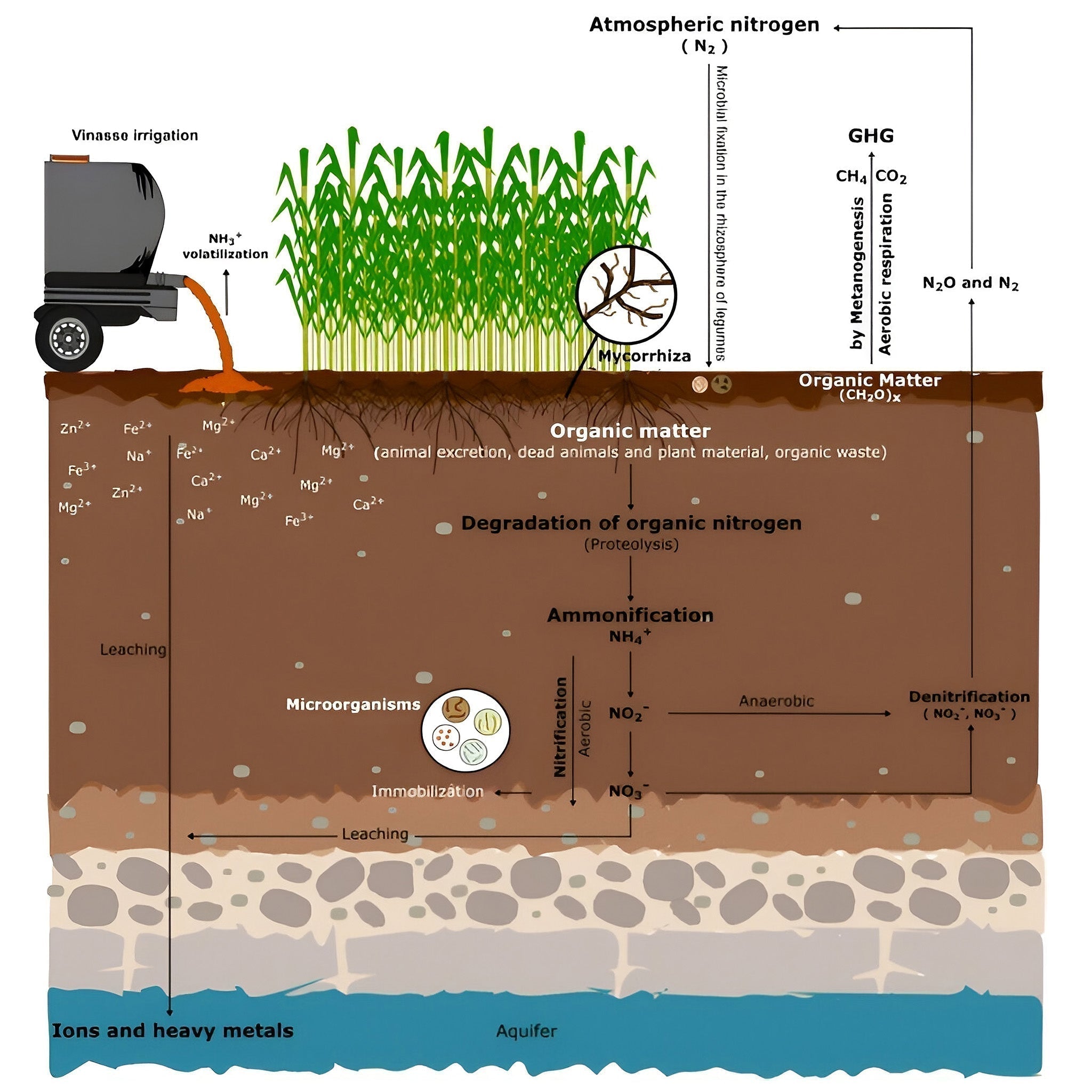Facts and Myths About Fertilisers
Fertilising is a critical part of gardening, but it can also be a source of confusion. With so much information—and misinformation—circulating about garden fertilisers, it’s easy to make mistakes that could harm your plants or the environment. Let’s break down some common myths and facts about garden fertilisers to help you make informed decisions for your garden.
Myth 1: Fertilisers Are Plant Food
The misconception that fertilisers feed plants directly arises from the common phrasing that fertilisers are “plant food.” This is misleading because it oversimplifies how plants obtain energy and nutrients. Here’s a breakdown to clarify this misunderstanding:
Fact: Fertilisers supply essential nutrients—such as nitrogen (N), phosphorus (P), potassium (K), and trace elements—that plants need for growth and development. These nutrients act as raw materials for various physiological processes, such as building cell walls, developing roots, and producing flowers and fruits.
How Plants Actually Feed Themselves
Plants produce their own “food” through photosynthesis, a process that occurs in their leaves. Using sunlight, water, and carbon dioxide from the air, plants create glucose (a form of sugar) and oxygen. The glucose serves as an energy source and a building block for growth.
In this sense:
- Photosynthesis is how plants “feed” themselves.
- Fertilisers merely provide the nutrients necessary for plants to carry out these processes efficiently.
Why the Misconception Exists
- Terminology: The phrase “plant food” is often used in gardening products to simplify marketing language, making it sound as though fertilisers are analogous to how food nourishes humans.
- Visible Impact: Fertilisers can result in rapid growth or lush foliage, which gives the impression that they are directly fueling the plant’s energy needs.
The Risks of Believing This Misconception
- Over-fertilisation: Thinking more fertiliser equals more “food” can lead to over-application, causing nutrient imbalances, fertiliser burn, or environmental damage from runoff.
- Neglecting Soil Health: Fertiliser is only part of the equation; healthy soil with good structure and microbial activity is vital for nutrient absorption.
Correct Understanding
Fertilisers act as supplements that enable plants to maximize their growth potential. However, the energy plants need to grow comes from the glucose they create through photosynthesis, not from the nutrients in the fertiliser. By using fertilisers correctly and in conjunction with other good gardening practices, you can help plants thrive without falling into the trap of overuse or misunderstanding their purpose.
Myth 2: More Fertiliser Means Better Growth
Fact: Over-fertilising can harm plants. Excess nutrients may lead to “fertiliser burn,” resulting in yellowing or wilting leaves. In addition, it can cause environmental issues like water pollution when runoff carries nutrients into rivers and streams. Always follow the manufacturer’s instructions and apply the correct amount.
Myth 3: Organic Fertilisers Work Slower Than Synthetic Ones
Fact: Organic fertilisers, like compost or manure, generally release nutrients more slowly because they depend on microbial activity in the soil. However, certain organic products, such as amino acids (a major component in all of GARDEN GOLD products), can provide a quicker nutrient boost.
Amino acids break down in the soil through microbial activity and enzymatic processes, releasing nutrients like ammonium and nitrate for plant uptake. Plants can also absorb amino acids directly, gaining a quick and efficient source of nitrogen. Additionally, amino acids improve nutrient availability and stimulate microbial activity, enhancing overall soil and plant health.
Synthetic fertilisers, on the other hand, deliver nutrients immediately but don’t improve soil health over the long term.
Myth 4: Fertilising Is Only Necessary for Poor Soil
Fact: Even healthy soils can benefit from fertilisers, especially for heavy-feeding plants like tomatoes, chiles, and cucumbers. Regular fertilising replenishes nutrients that plants remove during their growth cycles. Soil testing can determine if your soil needs additional nutrients.
Healthy soil begins with a good base of compost. You can read more here about incorporating both compost and GARDEN GOLD liquid organic fertilisers into your gardening routine as an effective way to maximize plant health.
Myth 5: Fertilisers Harm the Environment
Fact: Improper use of fertilisers can harm the environment, but when used responsibly, they can boost plant health without negative consequences. Techniques like using organic fertilisers, avoiding over-application, and incorporating slow-release options can reduce environmental impacts.
Myth 6: Fertilising Once Is Enough
Fact: Nutrient needs vary throughout the growing season. For example, plants may require more nitrogen for leafy growth in the early stages and more phosphorus and potassium for flowering and fruiting. The 100% organic nature of GARDEN GOLD products means that the elements break down in the soil slowly and release their nutrients in a manner that matches the growth curve of plants over the season. GARDEN GOLD ORGANICS recommends split applications, or “little and often” feeding, ensuring plants receive the nutrients they need at the right time.
Myth 7: Organic Fertilisers Are Always Better Than Synthetic Ones
Fact: Both organic and synthetic fertilisers have their pros and cons. Organic options improve soil structure and encourage microbial activity but may not offer immediate nutrient availability. Synthetic fertilisers provide quick results but do not contribute to long-term soil health.
As organic growers, we should reject synthetic fertilisers in favor of organic fertilisers to benefit soil health by fostering long-term sustainability. Organic fertilisers enhance soil structure, promote water retention, and encourage beneficial microbial activity, which improves nutrient cycling and plant resilience. In contrast, synthetic fertilisers can degrade soil over time, causing compaction, nutrient imbalances, and reduced microbial diversity. By opting for organic alternatives, we nurture a healthier, more fertile soil ecosystem that supports robust plant growth and environmental sustainability.
Myth 8: All Plants Need the Same Fertiliser
Fact: Different plants have different nutritional requirements. For example, leafy greens thrive with nitrogen-rich fertilisers, while flowering plants like tomatoes need more phosphorus to support flowering and fruiting.
However, this means purchasing a number of fertilising products for each of your plant species, which is not only impractical, but costly as well.
GARDEN GOLD products have been formulated to address this issue by supplying all the necessary macro/micronutrients in balanced, universal formulas for a wide range of indoor and outdoor plants.
To cater to plants that need more nutrients ("heavy feeders"), GARDEN GOLD ORGANICS developed GARDEN GOLD - Tomato & Chile Formula which contains more phosphorus, potassium, calcium and magnesium, as well as other essential micronutrients such as iron and boron than our Houseplant and Garden Formulas.
And finally, to address any nutrient deficiencies, we developed our Sea-Prime Formula to be used in conjunction with our "base" fertilisers. Sea-Prime should be used (ideally as a foliar spray, or watered into the soil) every other feeding to ensure vibrant growth.
Myth 9: Fertilisers Fix All Garden Problems
Fact: Fertilisers address nutrient deficiencies but can’t solve other issues like poor drainage, compacted soil, or pest infestations. A comprehensive approach that includes soil preparation, pest control, and proper watering is essential for a thriving garden.
Myth 10: Fertiliser Timing Doesn’t Matter
Fact: Timing is crucial for effective fertilising. For instance, applying fertiliser during a plant’s dormant phase (winter) can waste nutrients and harm the soil. Fertilise during active growth periods—typically in spring and summer—for the best results.
Tips for Responsible Fertiliser Use
- Test Your Soil: A soil test can reveal nutrient deficiencies and pH levels, helping you choose the right fertiliser.
- Follow Directions: Over-application can harm plants and the environment. Stick to recommended rates and schedules.
- Use Organic Options When Possible: Organic fertilisers improve soil health and are less likely to leach into waterways.
- Water Wisely: Water your garden before and after fertilising to help nutrients reach the root zone without causing runoff.
- Rotate Crops: Avoid planting the same crops in the same spot year after year to prevent nutrient depletion.
Final Thoughts
Understanding the facts and myths about garden fertilisers can help you make better choices for your plants and the environment. By using fertilisers wisely, you can achieve a healthy, productive garden or vibrant houseplants while minimizing any negative impact.



Leave a comment
All comments are moderated before being published.
This site is protected by hCaptcha and the hCaptcha Privacy Policy and Terms of Service apply.